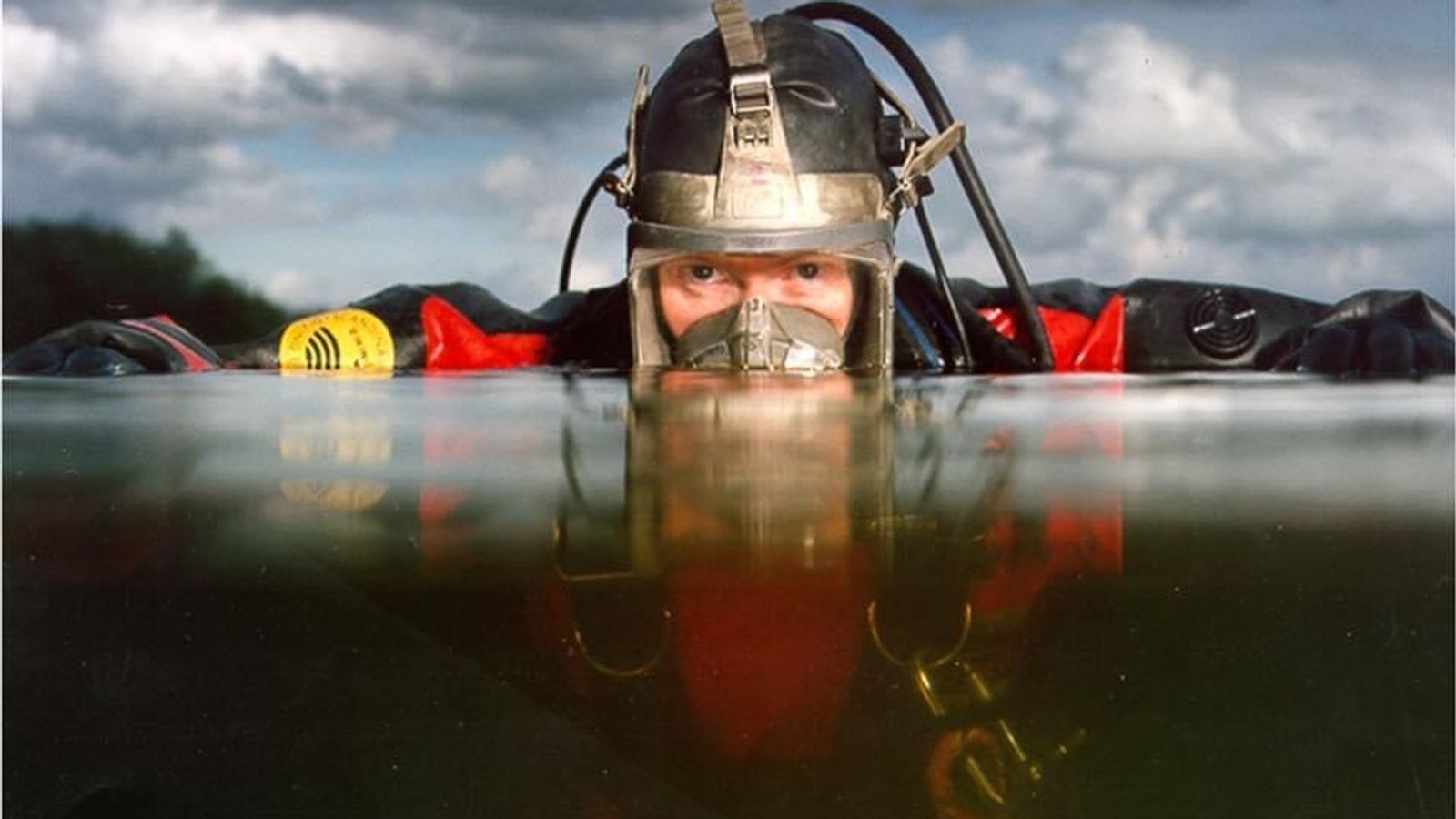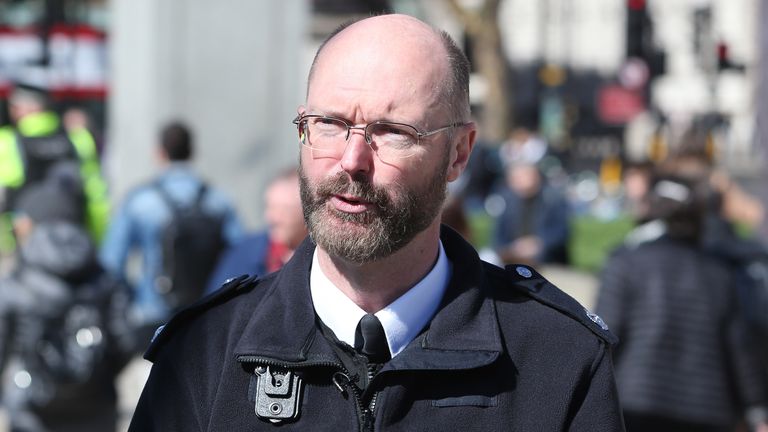There was always a “huge sense of relief” for Gill Williams when she found a body.
Working as a police diver, the most difficult part of her job was the long, tiring searches – her mind playing tricks as she felt her way forward in the cold, dark water, waiting to touch a limb.
During her 23-year career with Thames Valley Police, she says there were only a couple of occasions in hundreds of searches that bodies were found as soon as she entered the water.
Now retired, she says she doesn’t envy the task of the marine unit looking for 35-year-old Abdul Ezedi in the River Thames.
Ezedi is believed to have died after entering the water around Chelsea Bridge, a few hours after allegedly throwing a strong alkali on his former partner and injuring her two daughters – aged three and eight – in Clapham, south London, on 31 January.
The Metropolitan Police has said it could take up to a month to find him – but the force also admits his body may never surface due to the conditions in the river.
During the search for Ezedi, two other bodies were discovered in the Thames – unrelated to the case.
It sounds shocking but Ms Williams says sadly this is “not unusual”. She and her team would sometimes be looking for up to six bodies after Christmas and New Year, a common time for people to take their own lives.
“We have recovered bodies that were down for three months, eventually found snagged up to three miles downstream – that’s a huge, huge area,” she tells Sky News.
Between 27 and 37 people died annually in the Thames in the years 2015 to 2022 – an average of about 31 – according to the Port of London Authority, which says 90% were a result of suicide.
‘It can be traumatic’
Some are accidental drownings and the vast majority are identified – their characteristics compared with the missing persons register, then confirmed through DNA, dental records or fingerprints.
Homicide victims are very rare – the torso of a young boy, nicknamed Adam by police, discovered in 2001 has never been identified. He is thought to have been trafficked to the UK from Nigeria and possibly murdered in a ritualistic killing.
For those who recover the bodies, it can be “traumatic”, says former Met detective Nick Aldworth.
“I have recovered plenty in my career and some of those have been in horrific states of decomposition,” he tells Sky News.
“That in itself is traumatising and makes you physically feel unwell so it’s not pleasant.
“Every person has a different reaction, some will be very scientific and pragmatic about it, others will find it quite distressing.”
Ms Williams insists she “never found it difficult”, crediting the support of her close-knit team for being able to cope.
“Psychologically afterwards – I did it for a very, very long time – I have never had nightmares,” she says.
“I know of police divers who have had problems and had to leave the team.”
‘Massively hostile environment’
On the challenges facing officers searching for Ezedi, Mr Aldworth described the Thames as a “massively hostile environment that’s constantly moving”.
“You’re talking about a river which is 275 miles long with a tidal range of 23ft and speeds of up to 10mph,” he says.
“You can’t see an inch in front of you and the challenge you have got is where do you start.”
Jumping into water from height can be like hitting concrete, he says, and it is “incredibly unlikely” Ezedi’s body will still be near Chelsea Bridge, with the strong tidal currents likely to have taken him down river.
If someone is weighted down with clothes, their body can sink straight away, or become snagged on one of the shopping trollies, sunken boats, cars and motorbikes, trees or other junk in the river.
Read more:
What were Abdul Ezedi’s movements after chemical attack?
Relative of Clapham chemical attack suspect speaks out
Over time, as the body starts to decay, gasses inside the stomach start to expand and they start to rise to the surface, says Mr Aldworth.
It can take a long time for a body to reach the sea because the changing tides move objects in both directions, but they are less likely to be spotted past Tower Bridge because there are fewer tourists and other passers-by.
The two bodies found during the search for Ezedi were discovered within 25 minutes of each other on Saturday – one near HMS Belfast and the other in Limehouse.
Both deaths are being treated as “unexpected pending further inquiries”.
Anyone feeling emotionally distressed or suicidal can call Samaritans for help on 116 123 or email jo@samaritans.org in the UK. In the US, call the Samaritans branch in your area or 1 (800) 273-TALK




